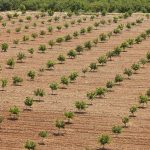With the increasing demand for sustainable packaging, the global market is witnessing a surge in the adoption of bioplastic materials. These materials, derived from renewable plant sources, are becoming an attractive alternative to conventional plastics. As one of the leading economies in Europe, the United Kingdom is significantly contributing to this growth pattern. This article takes a deep dive into the future of plant-based bioplastic materials in the UK’s packaging industry.
Market Growth Forecasts
The market for bioplastics in the packaging industry is growing at a rapid pace. According to a recent analysis, the UK has seen a growth rate of nearly 20% year-on-year in the adoption of bioplastics for packaging.
Lire également : How Is Machine Learning Being Applied to Optimize Energy Usage in UK Smart Buildings?
The table of market figures shows a similar trend. By 2023, the UK bioplastics market was valued at $1.4 billion. The forecast for 2025 suggests a potential growth to $3.2 billion, driven by increased consumer demand and stringent regulations on single-use plastic packaging.
The market is driven by several factors, including a shift towards sustainable packaging, innovations in bioplastics manufacturing, and increased public awareness about climate change. The UK government’s commitment to reducing greenhouse gas emissions by 78% by 2035 may serve as a powerful catalyst for the expansion of the bioplastics market in the UK.
Lire également : How Can AI-Enhanced Virtual Reality Improve Phobia Treatment Outcomes?
Material Analysis: Bioplastics Versus Conventional Plastics
Bioplastics have multiple advantages over traditional plastics, which primarily contributes to their escalating demand. They are made from plant-based materials such as corn, sugar cane, and other agricultural residues, providing a sustainable alternative to petroleum-based plastics.
Conventional plastics take hundreds of years to decompose, whereas bioplastics, especially those based on polylactic acid (PLA), are fully compostable. This means that they can be returned to the environment safely, significantly reducing their environmental impact.
Furthermore, the production of bioplastics emits less carbon dioxide compared to traditional plastics, aligning with the global push towards carbon neutrality. The analysis of these materials clearly shows that bioplastics have a significantly lower environmental footprint.
Industry Adoption: Food Packaging Takes the Lead
While bioplastics have found applications across various sectors, the food packaging industry is leading the charge in the UK. The demand for plant-based bioplastic packaging in the food industry is high due to its biocompatibility and the consumers’ increasing preference for sustainable packaging.
Major food chains and supermarkets in the UK have started transitioning to bioplastic packaging. Not only does an eco-friendly package appeal to the environmentally conscious customer, but it also aligns with corporate sustainability goals.
The usage of bioplastics in food packaging offers opportunities for business growth while contributing positively to the environment. The growth figure in the food packaging sector is expected to maintain an upward trajectory, paving the way for the broader adoption of bioplastics in other industries.
Global Comparison: Europe and America
On a global scale, Europe, led by countries like the UK, Germany, and Italy, is the largest market for bioplastics. The European market accounted for around 60% of the global bioplastics production capacity in 2023.
In comparison, America, despite having a larger population and economy, accounted for only 20% of the global production. The higher adoption rate in Europe can be credited to the stringent regulations against conventional plastics and the general public’s high environmental awareness.
The UK, with its favourable policies and high consumer demand, is set to remain a key player in the European bioplastics market. Its commitment to sustainability and innovation makes it a model for other regions and countries.
Challenges and Potential Solutions
While the future of bioplastics in the UK’s packaging industry looks promising, it does not come without challenges. The main concerns revolve around the competition for food crops, high production costs, and the need for specialised composting facilities.
To address these issues, industry experts suggest a multi-faceted approach. Encouraging the use of non-food crops and agricultural residues for bioplastic production can alleviate the concern over food competition. Investment in research and development can lead to the discovery of more cost-effective production methods.
It’s also crucial to develop efficient composting infrastructures and encourage recycling to ensure that the benefits of bioplastics are fully realised. Only by tackling these challenges head-on can the UK effectively sustain the growth of the bioplastic market.
To summarize, the UK’s packaging industry is witnessing a significant shift towards plant-based bioplastics. Market growth forecasts, material analysis, industry adoption rates, and global comparisons all point to a bright future for bioplastics in the UK. However, overcoming the associated challenges will be crucial in shaping this future. With the right strategies and commitment, the UK could lead the way in sustainable packaging, setting a global benchmark for others to follow.
Technological Innovations in Bioplastic Production
As the demand for bioplastics grows, so does the need for more efficient and cost-effective methods of production. Currently, the process of creating bioplastic involves the fermentation of plant sugars, which can be costly and time-consuming. However, recent advancements in technology suggest a promising future for bioplastic production in the UK.
One such innovation involves using genetically modified bacteria to produce bioplastics. These bacteria are engineered to consume plant waste products such as lignin, a by-product of paper manufacturing, and convert them into a type of bioplastic known as polyhydroxyalkanoates (PHAs). This method not only results in a completely renewable and biodegradable plastic but also provides a sustainable solution for managing agricultural and industrial waste.
Another promising development is the use of algae in bioplastic production. Algae are fast-growing, require minimal resources, and can be harvested year-round, making them an ideal source for bioplastic production. Companies like Algix in America and Bloom in the Pacific market are already incorporating algae-derived bioplastics in their products, reflecting the global market’s potential for this technology.
As these technologies become more refined and commercialized, they are expected to significantly reduce the production costs of bioplastics, making them more accessible to the wider market. The UK, with its strong focus on innovation and sustainability, is well-positioned to capitalize on these technological advancements.
Conclusion: The Future of Bioplastics in the UK’s Packaging Industry
The future of plant-based bioplastic materials in the UK’s packaging market appears to be on a promising trajectory. The country’s impressive market growth forecasts, coupled with its commitment to sustainability, make it an attractive landscape for bioplastics.
Comparatively, the European market, led by countries like the UK, is outpacing the American market in terms of bioplastic adoption. Even in the global context, with markets in the Pacific region and Latin America, the UK is setting a high standard with its innovative solutions and commitment to environmental preservation.
However, the journey to a fully sustainable plastic packaging industry is not without its challenges. Competition for food crops, high production costs, and the need for specialized composting facilities are all hurdles that must be overcome. Yet, with continued investment in research and technological innovation, these obstacles can be addressed.
The UK’s progressive policies, coupled with the public’s growing environmental consciousness, ensure a favorable environment for the rise of bioplastics. It’s safe to say that the UK packaging industry’s future is green, with bioplastics playing a major role in this transition.
In conclusion, the shift towards plant-based bioplastic materials in the UK’s packaging industry is more than just a trend. It’s a transformation that’s here to stay, shaping the future of packaging not just in the UK, but setting a global benchmark that other countries can aspire to reach. The UK’s journey towards sustainable packaging is one that is worth watching, and potentially emulating, as the world grapples with the pressing issue of plastic pollution.






